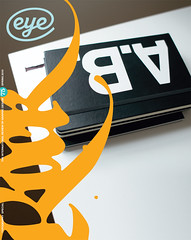Spring 2010
Red rags to the male chauvinist bulls
Ms Understood: Women’s Liberation in 1970s Britain
The Women’s Library, London Metropolitan University, London<br>8 October 2009 – 31 March 2010It is nearly 40 years since feminist hecklers reduced the comedian Bob Hope to silence at a Miss World beauty contest in London (his considered comeback was reported to be ‘Pretty girls don’t have those problems’). The protest is celebrated in this exhibition marking the 40th anniversary of the first national Women’s Liberation Conference in Britain, held at Ruskin College, Oxford, in February 1970. The words ‘you poor cows’ on one of the placards visible in a photograph of protesters exhibited at ‘Ms Understood’ may have been a bit of a failure as a declaration of sisterly solidarity with the exploited contestants, but they do point to arguments about beauty and appearance and fashion that persist today.
The ambush of Miss World that November was seen by a mass television audience, and catapulted the demands of the movement out from the workshops and into the public arena – equal pay, equal education and job opportunities, free contraception and abortion on demand, free 24-hour nurseries. Press cuttings jolt you back to the 1970s; here is The Daily Telegraph’s spin on the Ruskin conference: ‘Delegates discussed the family and the role of the mother, women and work and women and revolution. While they talked, one group of fathers ran a crèche for 40 children left temporarily motherless.’
Drawn from two Women’s Library research projects – one documenting the history of the women’s liberation movement and the other on ‘The Politics of Appearance’ – ‘Ms Understood’ reveals the impressive range and quality of the library’s own archives. Give Us Equal Pay Now!, for example, is a startling flyer, dating back to 1946, from the National Association of Women Civil Servants, women who would have been running Whitehall wartime operations in place of men who had joined up.
The 1970s campaign posters by the See Red Women’s Workshop are tremendously good, both as graphics and as polemics, the two being inextricable. Here is another politics-of-appearance argument, about the making of propaganda: things produced with professional skill are apt to be regarded as inauthentic.
But a different view comes from Val Charlton (now senior lecturer in special effects at the University of the Arts), a member of the collective that produced the socialist-feminist magazine Red Rag, which ran for about fifteen issues during most of the 1970s. She is quoted in the exhibition guide, saying: ‘I enjoyed it, the graphic design side of Red Rag. It was very important that the thing looked right. It wasn’t any conscious style. It had to look competent and professional. It annoyed me if something looked messy and un-thought-out. I felt the visual side should be witty.’
For an example of wit, see the jacket of Ann Oakley’s book Housewife (it helps to be familiar with detergent packaging). Who designed it? I don’t know. In the best tradition of collective working, the See Red posters are unsigned, and their makers are not identified here. But if it matters who spoke and who wrote, then it matters who made it look the way it does.
The designers of the exhibition are muf, a female architectural partnership with a track record in creating likeable public spaces. They have kept it democratically low-tech without pretending to be artless. Their graphics collaborators, the similarly lowercased objectif, make good use of another idea from the late 1960s and 70s, the magazine that is also a poster, with a 48-page broadsheet exhibition guide on newsprint. As well as full page colour reproductions, it has exhibition narratives in 48pt, which double as display panels pinned to the walls. And it is free (a £1 donation is suggested). So is the exhibition – and more fun, you might conclude, than the made-over Whitechapel Gallery down the road.
First published in Eye no. 75 vol. 19 2010
Eye is the world’s most beautiful and collectable graphic design journal, published quarterly for professional designers, students and anyone interested in critical, informed writing about graphic design and visual culture. It is available from all good design bookshops and online at the Eye shop, where you can buy subscriptions and single issues.

